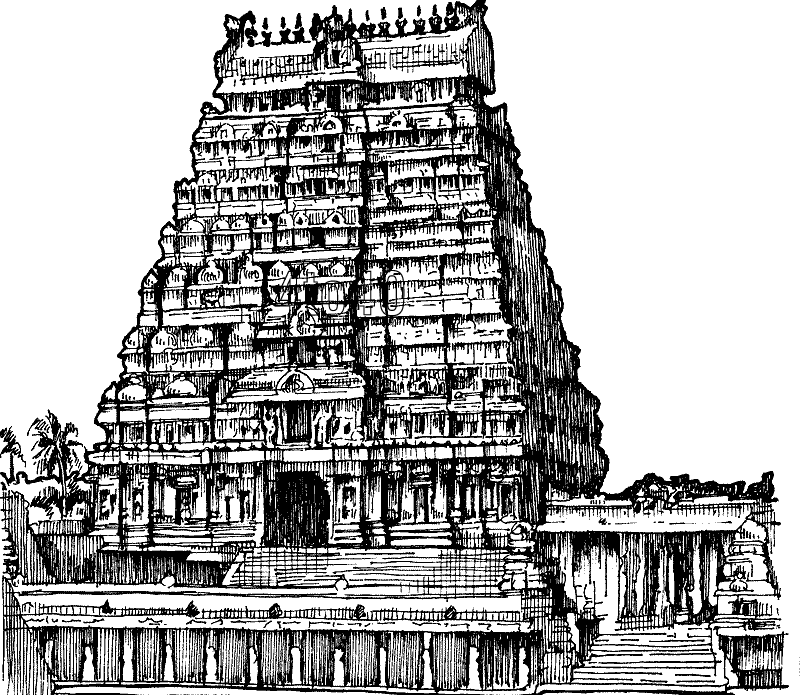
VINAYAKA CHATURTHI
- S Subramaniam
- Aug 27
- 4 min read
मूषिकवाहन मोदकहस्त
चामरकर्ण विलम्बितसूत्र ।
वामनरूप महेश्वरपुत्र
विघ्नविनायक पाद नमस्ते ॥
On the auspicious occasion of Vinayaka Chaturthi, let's pray before Lord Maha Ganapathi and learn quite a few lessons from one of the most popular Sloka in praise of the Lord.
Below is presented a part by part interpretation of the above Sloka:
1 of 6 मूषिकवाहन - Mushika Vahana
The simple meaning of the above expression is that the vahana (vehicle) of Lord Vinayaka is the mouse known in Sanskrit as the mushikam.
There was a Gandharava by name Krouncha who was cursed to be born as a mouse. The mouse assumed enormous size and started creating havoc. Lord Vinayaka was sent to destroy it. Instead of killing the mouse, he subdued it and took it as his Vahana.
क्रौंच नाम गन्धर्वाय गणेशाय सुपूजिताय च
करोमि वन्दनम् गणेशम् मूषिक वाहनम् प्रणमामयहम्
The Inner meaning is mouse is very small in size but it carries the huge elephant size Vinayaka. This signifies that by constantly praying (remaining) at the feet of Vinayaka, we can successfully achieve even the most difficult, monumental / Herculean tasks.
Another interpretation can be that the mouse is a wavering animal. It never remains in one place and never focuses on what is going on. It represents ignorance. But when an elephant (which represents knowledge) sits on it, it remains in one place. It teaches us a lesson that ignorance can be subdued / conquered only by the ultimate knowledge. Let's seek that knowledge from the giver of knowledge, Vinayaka
2 of 6 मोदकहस्त Modaka Hasta
Lord Vinayaka holds a Modakam, his favourite food, in his hand.
It should be clearly remembered here that the Modakam that Lord Vinayaka is holding in his hand is not for his own consumption but it represents the blessings he wishes to give to all his devotees who worship him on this auspicious day.
The word Modak derives its origin from the word Pramoda which refers to happiness. In fact, Taitriya Upanishad (Brahmaanda Valli) classifies three stages of happiness Moda (joy),Pramoda (delight) and Anandam (the ultimate happiness). Lord Vinayaka provides to his devotees such kind of ultimate happiness through the Modakam held in his hand.
The three ingredients of Modakam, rice flour, coconut and jaggery represent the body, soul and mind in that order and the conical top of the Modakam stands for complete concentration of our devotion towards God (aikyam ஐக்கியம்).
3 of 6 चामरकर्ण - Chamara Karna
It refers to the ears of Lord Vinayaka which are like Chamara or the whisk.
Chamara or the whisk is one of Sixteen offerings to God (Shodasa upachara). In this context chamara should be interpreted as the consciousness or the awareness of the five senses. Let me quote the following Sloka
पञ्चधा स्फुरणम् एव संविदश् चामरं
It means that the supreme form of offering the Chamara to God is the shimmering of innate awareness of the five senses.
Comparing Lord Vinayaka’s ears to Chamara signifies that he not only listens but immediately grants boons that his devotees seek from him.
4 of 6 विलम्बितसूत्र Vilambit Sutra.
It refers to the Lord wearing a long thread (yagyopavitam / Upanayanam). So long that it flows up to his knees..
However the correct interpretation is that - the three threads of yagyopavitam that the Lord is mentioned to be wearing represent the three human gunas - Satva, Rajas and Tamas and the central knot that joins the three threads, represents the Brahman. Likewise whatever path a devotee undertakes in his spiritual journey (be it Satva, Rajas or Tamas) its ultimate destination is the Brahman and he reaches it with the blessings of Lord Vinayaka.
Vilambita in this context refers to a lengthy one - however it literally refers to being extremely slow or tardy. It should be taken here that during his spiritual journey a devotee may find it to be an enormously lengthy one, sometimes appearing to be a never ending one, but the devotee should be steadfast in his approach and never give up. All kinds of obstacles (Vignam) that come his way will be removed by Lord Vinayaka.
5 of 5 वामनरूप Vamana Roopa
It literally refers to Lord Vinayaka being short in structure. However it is an incorrect description. It is not addressed to God but to his devotees.
Vamana - or the dwarf-like structure is an important lesson for the devotees. It teaches us that : Never feel proud about your achievements. You have achieved whatever you have, because you were destined to do so by the grace of God. It is very important to remember that devotees should always remain obedient and modest. He should consider himself to be a dwarf before the mighty God. Hey Vinayaka, instill that quality in us.
6 of 6 महेश्वरपुत्र Maheshwara Putra
Lord Vinayaka is here being referred to as the son of Maheshwara or Lord Shiva.
It's again an object lesson for us devotees. It is very important that we should never discriminate / or differentiate amongst individuals.. We should never compare ourselves with others in terms of physical, social, financial, and literary differences that exist amongst us. There is no strong person or weak person, no fair complexioned or no dark complexioned, there is no upper caste or lower caste, no rich or poor, no scholar or uneducated before the eyes of God. We all are children of the same God and equal before Him.
Not just Vinayaka, all of us are Maheshwara putras or children of Maheshwara or Lord Shiva and equal before him. Hey, Vinayaka remove the filth, the ugly demon of discrimination from our mind, cleanse our thoughts and bestow up on us the sense of oneness, unity amongst us, amongst all your devotees.
विघ्नविनायक पाद नमस्ते
Let's all prostrate at the feet of Lord Vinayaka
Sri Ganesha Sri Ganesha
Sri Ganesha Pahhimam
Sri Ganesha Sri Ganesha
Sri Ganesha Rakshamam





Comments